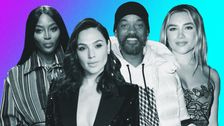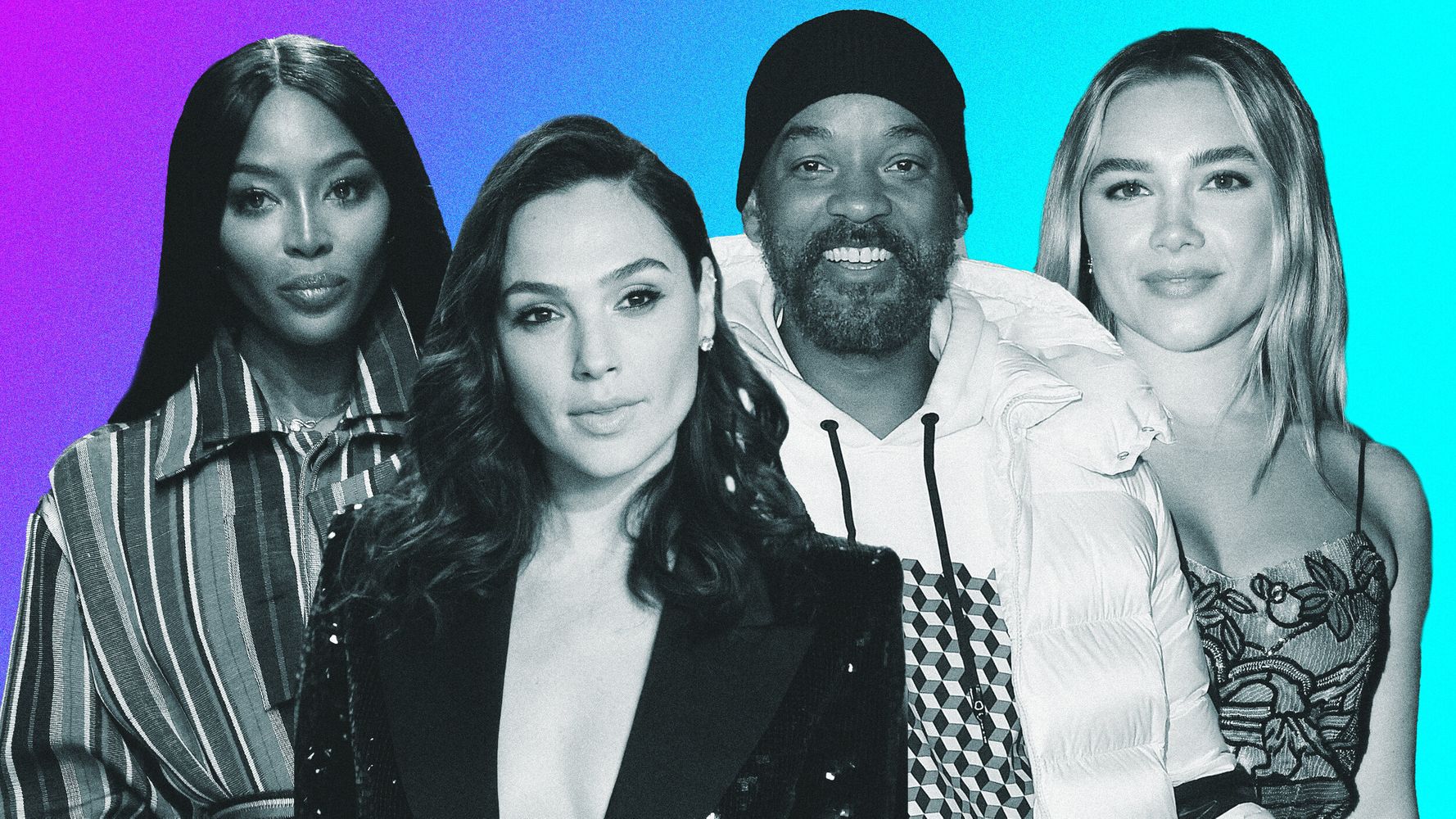[ad_1]

In the weeks since social distancing began in earnest, there have been numerous articles written about how celebrities are basically losing it. Celebrity culture is in a weird place.
Ana de Armas and Ben Affleck are snapped on paparazzi stroll after paparazzi stroll, awkwardly kissing through face masks. Gal Gadot “and friends” share an ill-conceived clip of themselves singing John Lennon’s “Imagine” from the comfort of their spacious homes, and people on the internet roll their eyes. Madonna, for some reason, sits in a giant bathtub surrounded by candles and waxes poetic about how COVID-19 is “the great equalizer.”
All these antics, all these livestreams (morning workouts! yoga! dance parties!) and all these posts are giving us a concentrated, heightened look at the new normal for celebrity culture. This is no longer the heyday of traditional movie stars, TV icons, pop idols and sports legends. We are firmly, deeply in the age of the celebrity as social media “influencer.”
The advent of influencer culture has dominated the conversation over the past few years. As more people are finding fame, notoriety and lucrative careers through “content” creation on platforms like Instagram and YouTube, the idea of what fame is — and who gets to be famous — has drastically shifted. Now, people are as inclined to obsess over the Alison Roman backlash as they are over the latest movie-star breakup. A fashion juggernaut like Vogue’s Andre Leon Talley can be quietly dismissed from his Met Gala red carpet duties in favor of zany YouTube personality Liza Koshy. A computer-generated “robot” named Lil Miquela with over 2 million followers on Instagram is literally starring in Calvin Klein ads. There is even something called a “bread influencer.”
The contrast of our current celebrity landscape with that of even 20 years ago is profound. It used to be that part of the luster of stars resided in their carefully manufactured distance, their inaccessibility. Holding us just a little at bay was part of what drew us in closer. Stars still love privacy, of course, but they’ve also had to adapt to a new celebrity-industrial complex, fueled by the internet, in which vulnerability and accessibility is part of the game. It’s not enough for someone like, say, Naomi Campbell to just be an iconic supermodel ― she must also post her beauty routine and interview famous friends like Anna Wintour on YouTube.
So you see things like Oscar-nominated Florence Pugh being just as, if not more, popular for her cooking videos on Instagram as she is for her performances in movies like “Midsommar” and “Little Women.” She shares funny and quirky behind-the-scenes glimpses of her life: goofing around on the BAFTAs red carpet, putting on a face mask on an airplane, sunbathing on the beach. It all looks effortless and aspirational, the perfect cocktail for a young, white, conventionally attractive starlet on the rise.
But then you also see her post a picture on Instagram of her boyfriend, fellow actor Zach Braff, who is 21 years her senior. The picture gets so many angry and disgusted complaints about their age difference — she is 24, he is 45 — that she turns off the comments and then posts a video admonishing her fans for failing to be kind and, more importantly, telling them to mind their own damn business. This constant juxtaposition of revealing and withholding is the precarious reality of celebrity culture today.
And none of it is necessarily bad or good. Times simply change. Who’s to say that Winona Ryder wouldn’t have posted weird memes if social media existed at the height of her fame in some alternate version of the ’90s? One can easily imagine Jane Fonda doing Instagram livestreams of her signature workout (incidentally, the 82-year-old Fonda recently posted a lil’ workout video on TikTok). Forget bad or good, forget lamenting “the death of the movie star” or the crassness of influencer culture. It’s simply interesting to watch stars navigate this brave new world. Particularly stars who ― unlike Gen Z celebs, including Billie Eilish, Lil Nas X or Timothée Chalamet, who grew up with social media and understand it more intuitively ― are pivoting to influencer-ship after creating more traditional, more remote personas.
Will Smith provides the best example. The 50-year-old actor became the king of Instagram when he joined in 2018, amassing 45.1 million followers on the platform in the span of just two years. In January, while promoting his recent film, “Bad Boys for Life,” on Sirius XM, he talked about how social media has changed his life and career.
“I had spent so many years of my life building up ‘Will Smith’ and this persona and the energy of who I was supposed to be in the world, and it had become a cage,” Smith said. “Social media has been really helpful for me in that way because I get to create. I get to create something every day. Create a piece of art. Whereas when you make a movie … six months of shooting. And then two years before that of putting it together. … So social media is in a really strange way helping me find who I really am, different from who ‘Will Smith’ is supposed to be.”
Smith’s pivot to content creation — he has a YouTube channel and a Facebook show, as does his wife Jada Pinkett Smith — isn’t really all that surprising. He is an incredible actor, but also very savvy at the game of celebrity. Unlike so many of the celebs who are flailing as they try to produce relatable content during this pandemic, he has mastered his online persona as effectively as he mastered his “Will Smith: Movie Star” persona during the height of his acting career in the 1990s and 2000s. Movies are still part of his legend, but sharing funny, inspiring, revealing posts about himself online are how he’s staying relevant.
In 2016, Forbes put Smith number two on its list of most-overpaid actors ― recent movies like “Concussion” and “Focus” had cost millions of dollars but failed to make decent returns, especially for a big star. But today, Smith’s YouTube channel with its 8.18 million subscribers gets millions of views daily, which translates to serious coin via ad monetization. His production company with wife Jada, Westbrook Studios, signed a new three-year-deal with Facebook in January. In April, he launched a 12-part “Snap Original” series in partnership with Snapchat called “Will From Home,” featuring himself in conversation with special guests and members of his own famous family.
If they can master it, it makes both dollars and sense for traditional celebrities to figure out ways to tap into this current moment. Fame, after all, is largely dependent on adaptability. This is why our pop stars change their entire personas every three to five years. It’s about staying relevant, by any means necessary. The internet has proven a powerful tool for harnessing the ability to keep people engaged. But for every Will Smith or Cardi B. (a little messy but endlessly entertaining on social media, where she initially became popular), there’s an Ellen DeGeneres complaining about how quarantine is like prison from her LA mansion.
As Richard Lawson recently wrote in Vanity Fair, “Vain, empty gestures like Gadot et al.’s have been tolerated in the past. But we’ve entered a new reality, in which a harsh light shines on all this placating distraction and has further revealed the serious cracks in the foundation of American life.”
Of course, it’s not just celebrities who are navigating how to be authentic on social media without being the worst. Celebs, though, offer up a very telling portrait of the current moment — we’re all going a little crazy and we’re all craving something real. Most of us are plugged in to the social media matrix and trying to figure it out. Our pop cultural landscape is just changing in fascinating, entertaining and often cringe-worthy ways.
The world of celebrity has always trafficked in artifice. Therein lies the rub. And that’s what makes it so weirdly entertaining to watch.
Calling all HuffPost superfans!
Sign up for membership to become a founding member and help shape HuffPost’s next chapter
[ad_2]
Source link

